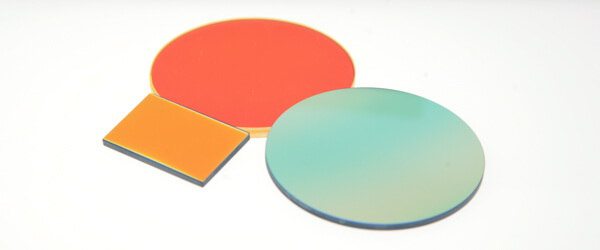Optical components used in demanding environments must perform reliably under extreme conditions. From space exploration to military operations, these components are exposed to intense environmental stresses such as temperature fluctuations, moisture, dust and radiation. Optical coatings play an important role in improving both reliability and performance of these components, ensuring their continued effectiveness.
If you work with optical components in harsh settings, you need to understand how coatings may protect and improve their durability. Let’s look at the many types of optical coatings created for severe environments, their material compositions and why they’re important in industrial applications.
What Are Harsh Environments for Optical Components?
Harsh environments are characterised by extreme conditions that can quickly degrade the performance of optical components. These include:
- Extremes of temperature: Quick shifts in temperature that can cause materials to expand, shrink or warp.
- Humidity and moisture: Water or condensation that can corrode or obstruct vision.
- Abrasive particles: Particles that can scrape or harm optical surfaces include sand, dust and other abrasive materials.
- Chemicals and caustic substances: Working in laboratories or other industrial environments where solvents, gases, or acids are present.
- Radiation: In aerospace or space applications, UV or ionising radiation is used.
Many industries rely on optical components to function effectively in these environments. The aerospace industry, military, oil and gas sector, and scientific research institutions all require high-performance optical systems to work reliably in challenging conditions.
Types of Optical Coatings Designed for Durability
To protect against the detrimental effects of harsh environments, different types of coatings are applied to optical components. Each coating is designed to provide specific protection, depending on the environment and application.
Anti-reflective (AR) Coatings
AR coatings are crucial for maximising light transmission, decreasing reflections on optical surfaces, and enhancing picture clarity. These coatings are especially helpful in situations where there are light fluctuations or strong light sources, such solar energy or outdoor imaging equipment.
Hard Coatings for Abrasion Resistance
In dusty, abrasive environments like deserts or industrial areas, optical components are at risk of scratches or wear. Hard coatings offer a durable layer of protection against physical damage, ensuring longevity and consistent performance.
Hydrophobic and Oleophobic Coatings
These coatings repel water, oils, and other contaminants, making them ideal for optics used in wet or oily environments. By keeping surfaces clean and clear, they maintain the optical clarity needed for precision work in fields such as marine exploration or laboratory research.
Electrically Conductive Coatings
Optical components in situations with static buildup or electromagnetic interference (EMI) require specific protection. Conductive coatings assist control electrical charges, reducing static buildup and harm to sensitive devices. These coatings are widely employed in military and aerospace applications.
Thermal Control Coatings
In high-temperature environments, thermal control coatings can either reflect or absorb specific wavelengths of light, helping manage heat transfer. This is crucial for optical components exposed to extreme heat, such as in space exploration or certain industrial applications.
Choosing the Right Materials for Coating Durability
The durability of optical coatings is heavily influenced by the materials used. Common coating materials include:
- Silicon dioxide (SiO2): Known for its hardness and resistance to scratching, SiO2 is a common choice for AR and protective coatings.
- Aluminium oxide (Al2O3): This material provides excellent thermal stability and scratch resistance, making it ideal for high-temperature applications.
- Magnesium fluoride (MgF2): Often used in AR coatings due to its broad-spectrum performance, MgF2 works well across various temperature ranges.
Testing and Standards: Ensuring Coating Performance
Optical coatings designed for harsh environments undergo rigorous testing to ensure their performance under extreme conditions. Some common tests include:
Abrasion Resistance Testing
To simulate the effects of dust and sand, abrasion tests evaluate how well the coating resists scratching or wear. This is particularly important for components used in desert environments or other abrasive settings.
Moisture and Corrosion Testing
Components exposed to humid or corrosive environments, such as coastal or industrial areas, are evaluated to verify that their coatings resist moisture ingress and chemical degradation.
Thermal Cycling and Radiation Testing
In aerospace and space exploration, optical coatings must withstand rapid temperature changes and high levels of radiation. Thermal cycling tests ensure that coatings maintain their performance despite repeated exposure to extreme heat or cold, while radiation tests check their resilience to UV and ionising radiation.
Industry-Specific Applications
Aerospace
In aerospace, optical coatings must withstand fast temperature fluctuations, high radiation levels, and possible exposure to chemicals or corrosive gases. Coatings used in aerospace applications are often evaluated under harsh circumstances to verify their dependability during flight or space missions.
Military and Defence
Optical systems used in the Military and Defence field are often exposed to sand, heat, and chemicals. Hard coatings and AR coatings ensure that these systems maintain high performance in hostile environments.
Scientific Research
Optics in Scientific research is frequently exposed to dampness, chemicals, or physical stress. Hydrophobic coatings, combined with heat and chemical protection, aid in the precision and clarity required for laboratory or field research.
Optical coatings play a critical role in ensuring the longevity and performance of optical components in harsh environments. By selecting the right type of coating and applying advanced deposition techniques, industries can ensure that their optical systems remain reliable even in the most challenging conditions.
Speak with our experts today to find the right coating solutions for your specific needs. Call us now at +44 (0) 1223 420329 or Contact Us to get started.




